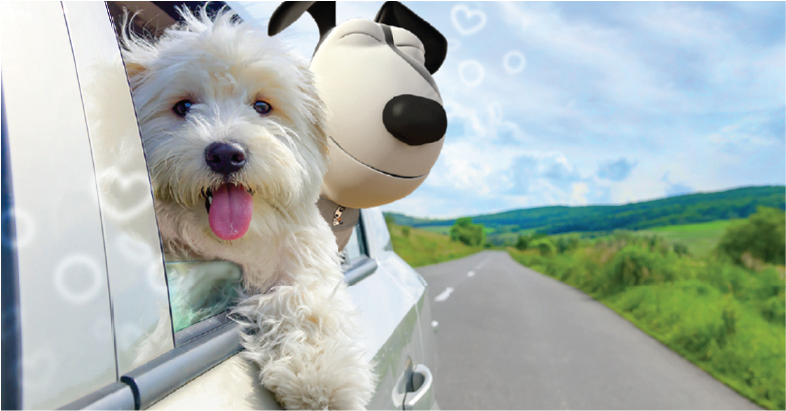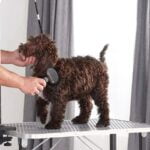Table of Contents
Traveling with pets can be a stressful experience, especially if your furry friend suffers from travel anxiety. Understanding how to handle pet travel anxiety is essential to ensure a calm and enjoyable journey. This guide provides ten effective strategies to help manage and reduce your pet’s travel anxiety.

1. Gradual Acclimation
Gradually acclimating your pet to travel can help reduce anxiety and make them more comfortable with the process.
- Short Trips: Start with short car rides to help your pet get used to being in the vehicle.
- Frequent Exposure: Increase the duration and frequency of trips gradually.
- Positive Associations: Create positive associations by offering treats and praise during and after the trips.
2. Comfortable Carrier
Using a comfortable and secure carrier can help your pet feel safe during travel.
- Proper Size: Ensure the carrier is the right size for your pet to stand, turn around, and lie down comfortably.
- Familiar Items: Place your pet’s favorite blanket or toy in the carrier to provide comfort.
- Ventilation: Ensure the carrier has good ventilation to keep your pet comfortable.
3. Calming Products
There are various products available that can help calm your pet during travel.
- Pheromone Sprays: Use pheromone sprays, such as Adaptil or Feliway, to create a calming environment in the carrier.
- Calming Treats: Offer calming treats or supplements that contain natural ingredients like chamomile or melatonin.
- Thundershirt: Use a Thundershirt or similar product to provide gentle pressure and reduce anxiety.
4. Maintain a Routine
Maintaining a familiar routine can help reduce your pet’s anxiety during travel.
- Feeding Schedule: Stick to your pet’s regular feeding schedule before and during travel.
- Exercise: Provide plenty of exercise before the trip to help your pet release excess energy.
- Bathroom Breaks: Ensure your pet has frequent bathroom breaks during the journey.
5. Desensitization Training
Desensitization training can help your pet become accustomed to the sounds and sensations of travel.
- Sound Desensitization: Play recordings of car or plane noises at a low volume and gradually increase the volume over time.
- Motion Desensitization: Practice sitting in the car with the engine running without going anywhere to help your pet get used to the motion.
6. Stay Calm
Pets can pick up on their owner’s emotions, so staying calm and relaxed can help reduce your pet’s anxiety.
- Remain Positive: Use a calm and soothing tone when talking to your pet.
- Avoid Stress: Try to stay relaxed and avoid showing signs of stress or frustration.
7. Proper Ventilation and Temperature Control
Ensure your pet is comfortable during travel by maintaining proper ventilation and temperature control in the vehicle.
- Air Flow: Ensure there is good airflow in the car by using air conditioning or opening windows slightly.
- Comfortable Temperature: Maintain a comfortable temperature to prevent overheating or chilling.
8. Frequent Breaks
Taking frequent breaks during travel can help reduce your pet’s anxiety and allow them to relieve themselves and stretch.
- Rest Stops: Plan for regular rest stops where your pet can get out of the car and move around.
- Hydration: Offer water during breaks to keep your pet hydrated.
9. Avoid Feeding Before Travel
Avoid feeding your pet a large meal before travel to prevent motion sickness and discomfort.
- Small Meals: Offer a small meal a few hours before travel.
- Light Snacks: Provide light snacks during travel if necessary.
10. Consult a Veterinarian
If your pet’s travel anxiety is severe, consult a veterinarian for additional strategies and possible medication.
- Professional Advice: Seek advice from your vet on managing travel anxiety and possible treatment options.
- Medications: Your vet may prescribe anti-anxiety medication for severe cases of travel anxiety.
Additional Resources on How to Handle Pet Travel Anxiety
For more detailed information and support, check out these trusted resources:
Understanding how to handle pet travel anxiety is essential for ensuring a calm and enjoyable journey for your furry friend. By implementing these ten effective strategies, you can help your pet feel more comfortable and reduce their anxiety during travel. For more resources on pet care, visit our Pet Care section.
FAQs
What are the common signs of travel anxiety in pets?
Common signs of travel anxiety in pets include panting, drooling, trembling, whining, and restlessness. Some pets may also show signs of nausea or vomiting.
Can I give my pet medication for travel anxiety?
Yes, in some cases, your veterinarian may prescribe anti-anxiety medication to help manage your pet’s travel anxiety. Always consult your vet before giving your pet any medication.
How can I help my pet if they get motion sickness while traveling?
To help prevent motion sickness, avoid feeding your pet a large meal before travel, and take frequent breaks to allow them to get fresh air and move around. Your vet may also recommend medication to help with motion sickness.
Are there natural remedies for pet travel anxiety?
Yes, natural remedies such as calming treats, pheromone sprays, and products like the Thundershirt can help reduce travel anxiety in pets. Consult your vet for recommendations.
How can I make my pet’s carrier more comfortable for travel?
Make your pet’s carrier more comfortable by placing their favorite blanket or toy inside, ensuring it has good ventilation, and using pheromone sprays to create a calming environment.
What should I do if my pet’s travel anxiety doesn’t improve?
If your pet’s travel anxiety doesn’t improve with these strategies, consult your veterinarian for further advice and possible treatment options. A professional trainer or behaviorist may also be able to help.
Conclusion
Handling pet travel anxiety is crucial for ensuring a calm and enjoyable journey for your furry friend. By understanding the causes of anxiety and implementing these ten effective strategies on how to handle pet travel anxiety, you can help your pet feel more comfortable and reduce their stress during travel.
Get LIFETIME ACCESS to “My Private Prompt Library”: https://bit.ly/MTSPromptsLibrary
Looking for a custom GPT? or SEO services for your website? Hire me on Fiverr: https://bit.ly/Hire_me_as_a_Freelancer
============================================
Get LIFETIME ACCESS to “My Private Prompt Library”: https://bit.ly/MTSPromptsLibrary











